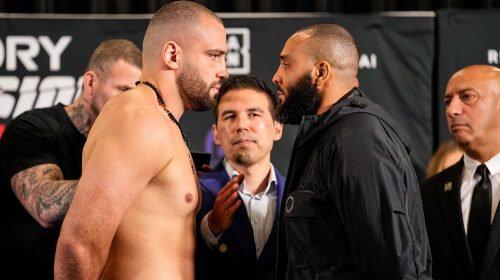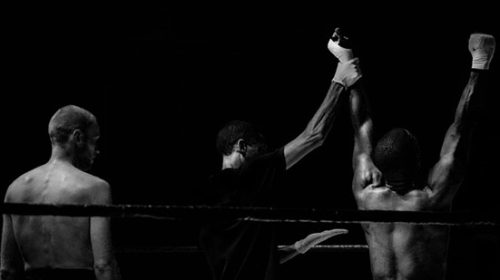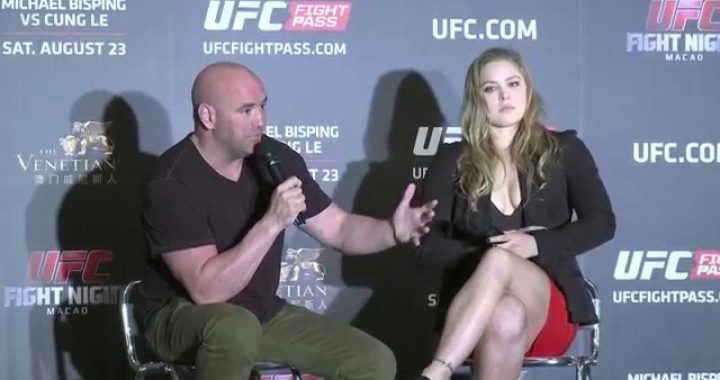
Fantasy Boxing Matchups: Jack Johnson vs Tyson Fury
Jack Johnson vs Tyson Fury – Who Would Win?
Since the beginning of human existence we have engaged in hand-to-hand combat. Fighting is a universal language all cultures and nationalities understand. Boxing, in particular, has been an Olympic sport since 688 BC when it was performed in ancient Greece. About 300-500 years ago boxing evolved from its origins into prize fighting. After the creation of the London Prize Ring Rules, the sport evolved into the more popularly known Queensbury Rules system. Throughout the sport’s history there have been a plethora of greats in every decade of the sport’s existence.
A prevailing question throughout time as been, “Can fighter ‘X’ beat fighter ‘Y’ in each of their prime?” This is the fifth entry in the series. We will take a look at two of the greatest trash-talking heavyweights in history. The first African American lineal heavyweight champion Jack Johnson and the most current lineal heavyweight champion, Tyson Fury will battle. If you missed previous entries, click them below to see what you have missed so far in the series.
First Entry in Series: Mike Tyson vs Deontay Wilder
Second Entry in Series: Ezzard Charles vs Roy Jones Jr
Third Entry in Series: Roberto Duran vs Vasyl Lomachenko
Fourth Entry in Series: Henry Armstrong vs Manny Pacquiao
Jack Johnson (late 1890’s to late 1910’s) vs Tyson Fury (late 2000’s-Present)
Jack Johnson-Brief Glance
Before there was Tyson Fury, before there was Muhammad Ali, there was Jack Johnson. The whirlwind effect Conor McGregor has created in the MMA world was done so well over 100 years ago. Johnson did the same thing in the world at the turn of the 1900’s. Greater than flaunting his gold teeth and white females at his side to cause a social ruckus, Johnson was the first African American athlete of prominence. In 1908 when Johnson won the lineal heavyweight championship, it was done 28 years before Jessie Owens won gold in the Berlin Olympics and 39 years before Jackie Robinson broke the color barrier in baseball. Before it was all said and done, Johnson earned a career record of 70-11-11 (35KOs) spanning 34 years of action.
Climb to Lineal Heavyweight Championship
On March 31, 1878, John Arthur “Jack” Johnson entered the world in Galveston, Texas. At the age of 19, Johnson took his first professional bout, defeating Charley Brooks via fourth round knockout. He walked out of his debut with the Texas State Middleweight title from this victory. Johnson continued fighting across the world until the fateful night of December 26, 1908. This is the night he defeated Canadian Tommy Burns for the lineal heavyweight championship in Australia. He massed a record of 48-5-9 and 3 no contest (65 bouts) before finally getting his title shot. Johnson purchased front row seats to all of Burns’ title defenses, tormenting and hackling the champion until Burns finally gave in and allowed Johnson to have his title shot.
Burns stated he would take the fight if the sum of $30,000 (about $843,500 in today’s money) to take the fight. An Australian business man, Hugh Donald “Huge Deal” McIntosh came up with the money and had the open-aired Sydney Stadium built to host the event. Johnson absolutely dominated the champion, taking the title in the 14th round. In Paul Beston’s The Boxing Kings: When American Heavyweights Ruled the Ring book he writes in the seventh round Johnson asked Burns, “Who taught you how to punch Burns? Your mother?” Johnson trash talked and smiled to the crowd and Burns’ cornermen throughout the contest, agitating all.
On the Run
Johnson defended the title six times before fleeing the United States to avoid federal prosecution for alleged violation of the Mann Act. The act generally stated it was against the law to transport a woman across state lines for “immoral use.” Johnson, who allegedly ran with prostitutes, crossed state lines with women as his companion, not to put them to work. An all-white jury convicted Johnson of violation of the Mann Act in June 1913. He skipped the country and met with his second wife in Montreal, ultimately fleeing to France.
Johnson’s next 18 bouts (15-2-1) would take place on foreign territory before fighting again in the United States. He lost the lineal title early in that run to Jess Willard in Cuba on April 05, 1915. Johnson would never recover the championship. On June 10, 1946 Johnson would unfortunately die in a car crash just outside of Raleigh, North Carolina.
The Accolades
Johnson was around long before the times of Ring Magazine and other outlets that produce yearly awards. In 1954 he was inducted into the Boxing Hall of Fame and in 1990 the International Boxing Hall of Fame. Johnson returned to the United States in July 1920 to serve his time at Leavenworth Penitentiary for his Mann Act conviction. While serving his one year, Johnson created a patent on a wrench (US Patent #1,413,121) which can be seen here. In 1920 Johnson applied for a pardon. It would be nearly 100 years before in May 2018 President Donald Trump signed a full posthumous pardon for Johnson’s conviction.
The Style
Obviously boxing over 100 years ago makes it hard to find video footage to analyze. Early on in his career Johnson was an aggressive striker, almost a brawler rather than a boxer. Eventually through training he became more of a boxer and developed some counter striking skills. His stamina was always a strong suit, dragging his opponents deep into the 20 round bouts. He would finish them with barrages of strikes until they could no longer defend. Though appearing larger than his opponents, Johnson would be a small heavyweight to today’s standards only standing at six feet tall and having a 74″ inch reach. He eventually lost the title to the much bigger Jess Willard who stood 6’6″ and weighed 235 pounds.
Tyson Fury-Brief Glance
It could be said Johnson’s reincarnation returned to Earth 110 years after his birth in the form of a 6’9″ Englishman with a 85 inch reach, Tyson Fury. Fury was born August 12, 1988 and entered the boxing professional ranks at the age of 20 defeating Bela Gyongyosi via first round TKO. After winning several European titles, defeated the best heavyweight at the time, Wladimir Klitschko, that many consider an upset in November 2015 in Germany. Bovada, a reputable betting website, had Klitschko at a -500 favorite to retain his title and Fury at a +350 underdog. Fury’s career would be quite the roller coaster ride seeing him take a three year layoff after the Klitschko bout before finnaly returning to the ring.
During his layoff, Fury ballooned to well over 300 pounds and used cocaine on a regular basis. Fury told “Rolling Stone” in October 2016, he’s done “lots of cocaine” but eventually kicked the habit. After working through his personal demons including severe depression, Fury returned to the ring. In June 2018 he defeated Sefer Seferi in the fourth round. After another victory in August 2018, the matchup was set with WBC champion Deontay Wilder. The two would engage in a back and forth similar to the days of Muhammad Ali and Joe Frazier. The first Fury/Wilder bout ended up in a draw but Fury had his way with Wilder in the rematch in February 2020, winning via seventh round TKO. Having not suffered a defeat since defeating Klitschko for the lineal championship in 2015, the lineal heavyweight championship timeline stand currently with Fury on top.
The Accolades
Sitting on top of the mountain, Fury is the current WBC, lineal, and The Ring champion. In 2015 Fury was crowned The Ring Magazine Fighter of the Year. He also earned the 2018 The Ring Magazine Comeback Fighter of the Year after returning from his three year layoff. In Fury’s first bout with Wilder, the 12th round saw epic moments and walked away with The Ring Magazine’s 2018 Round of the Year award. Arguably the most obvious award of all was winning The Ring Magazine 2015 Upset of the Year award for his decision victory over long-time division king Klitschko. Earning awards from other sports outlets, Fury also walked away with Sports Illustrated’s 2o15 Upset of the year in boxing.
The Style
Standing 6’9″ with an 85 inch reach, Fury owns one of the longest reaches in boxing history. Aside from the physical gifts, Fury has the ability to avoid a shot in a way that has not been seen by a heavyweight since Ali. Fury even mimicked the “rope a dope” move against Francesco Pianeta in his August 2018 bout. Where many heavyweights have the stigma of being a, “brawler,” Fury is a true boxer able to fight inside or outside with exceptional footwork for a man his size.
Prior to the second Wilder clash, Fury switched trainers to the famous Kronk Gym and into the hands of Sugar Hill Steward. At the age of 21 Fury ventured to the United States where he trained with Steward’s uncle, the late Emanuel Steward, who passed away in 2012. The switch to Steward so a much more aggressive Fury which will be interesting to see in the future if this style will continue to be embraced by Fury.
Writer’s Opinion
You could not find to boxers in history who reflect the theory of reincarnation better than the comparison of Jack Johnson and Tyson Fury. Fury would walk away with this victory merely based on the size difference and they fact that with over 100 years of evolution to the style of boxing, Fury’s system of boxing is much more well-defined. If a fighter of Johnson’s mindset and skillset excited today with today’s means of training and operation, he would very easily be a multi-time world champion. Not only that, Johnson faced real racial criticism and discriminations which hampered his career. But the build-up and hype to this fight would be second to none if it ever happened.

























